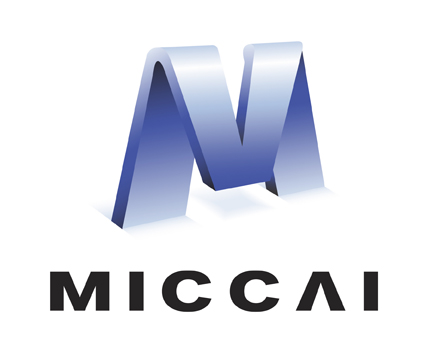Abstract
The segmentation of the histopathological whole slide images (WSIs) of nasopharyngeal carcinoma (NPC) plays an essential role in the diagnosis, grading and even prognosis analysis. Due to the huge size of pathological images and the fact that NPC often occurs in the middle and advanced stages, it is still challenging to generate accurate segmentation results automatically. Although many convolutional neural network (CNN) methods had achieved good segmentation performance in many types of images, however, the encoding of global context is insufficient, and it is prone to misjudge the adjacent regions. Meanwhile, the area of NPC pathological image is dense, which means that the image with a tiny size may fall into one category. To overcome this limitation, we apply a transformer-based framework on NPC pathological images that is designed for extracting and encoding global context information. To validate and compare the transformer framework with various CNN-based methods, experiments have been conducted on the clinical dataset collection of NPC. The transformer framework outperformed the state-of-the-art pure CNN-based methods in AUC and recall. Especially, our framework achieved 2.5%–3.5% higher DSC in 5X images and 2.1%–3.2% higher DSC in 10X images than other methods.
S. Diao and L. Tang—Contributed equally to this work.
Access this chapter
Tax calculation will be finalised at checkout
Purchases are for personal use only
Similar content being viewed by others
References
Thompson, L.D.: Update on nasopharyngeal carcinoma. Head Neck Pathol. 1, 81–86 (2007)
Bray, F., Ferlay, J., Soerjomataram, I., Siegel, R.L., Torre, L.A., Jemal, A.: Global cancer statistics 2018: GLOBOCAN estimates of incidence and mortality worldwide for 36 cancers in 185 countries. CA: Cancer J. Clin. 68, 394–424 (2018)
Lee, H.M., Okuda, K.S., González, F.E., Patel, V.: Current perspectives on nasopharyngeal carcinoma. In: Rhim, J.S., Dritschilo, A., Kremer, R. (eds.) Human Cell Transformation. AEMB, vol. 1164, pp. 11–34. Springer, Cham (2019). https://doi.org/10.1007/978-3-030-22254-3_2
Liu, Y., et al.: Tumour heterogeneity and intercellular networks of nasopharyngeal carcinoma at single cell resolution. Nat. Commun. 12, 1–18 (2021)
Wei, W.I., Sham, J.S.: Nasopharyngeal carcinoma. Lancet 365, 2041–2054 (2005)
Diao, S., et al.: Computer-aided pathologic diagnosis of nasopharyngeal carcinoma based on deep learning. Am. J. Pathol. 190, 1691–1700 (2020)
Wei, K.R., Xu, Y., Liu, J., Zhang, W.-J., Liang, Z.-H.: Histopathological classification of nasopharyngeal carcinoma. Asian Pac. J. Cancer Prev. 12, 1141–1147 (2011)
Feng, R., Liu, X., Chen, J., Chen, D.Z., Gao, H., Wu, J.: A deep learning approach for colonoscopy pathology WSI analysis: accurate segmentation and classification. IEEE J. Biomed. Health Inform. 25, 3700–3708 (2021)
Ronneberger, O., Fischer, P., Brox, T.: U-net: convolutional networks for biomedical image segmentation. In: Navab, N., Hornegger, J., Wells, W.M., Frangi, A.F. (eds.) MICCAI 2015. LNCS, vol. 9351, pp. 234–241. Springer, Cham (2015). https://doi.org/10.1007/978-3-319-24574-4_28
Sun, M., Zhang, G., Dang, H., Qi, X., Zhou, X., Chang, Q.: Accurate gastric cancer segmentation in digital pathology images using deformable convolution and multi-scale embedding networks. IEEE Access 7, 75530–75541 (2019)
Diao, S., et al.: Weakly supervised framework for cancer region detection of hepatocellular carcinoma in whole-slide pathologic images based on multiscale attention convolutional neural network. Am. J. Pathol. 192, 553–563 (2022)
Li, H., Xiong, P., An, J., Wang, L.: Pyramid attention network for semantic segmentation. arXiv preprint arXiv:1805.10180 (2018)
Chaurasia, A., Culurciello, E.: Linknet: exploiting encoder representations for efficient semantic segmentation. In: 2017 IEEE Visual Communications and Image Processing (VCIP), pp. 1–4. IEEE (2017)
Zhao, H., Shi, J., Qi, X., Wang, X., Jia, J.: Pyramid scene parsing network. In: Proceedings of the IEEE Conference on Computer Vision and Pattern Recognition, pp. 2881–2890 (2017)
Vaswani, A., et al.: Attention is all you need. Adv. Neural Inf. Process. Syst. 30 (2017)
Chen, J., et al.: Transunet: transformers make strong encoders for medical image segmentation. arXiv preprint arXiv:2102.04306 (2021)
Dosovitskiy, A., et al.: An image is worth 16x16 words: transformers for image recognition at scale. arXiv preprint arXiv:2010.11929 (2020)
Shao, Z., Bian, H., Chen, Y., Wang, Y., Zhang, J., Ji, X.: Transmil: transformer based correlated multiple instance learning for whole slide image classification. Adv. Neural Inf. Process. Syst. 34, 2136–2147 (2021)
Nguyen, C., Asad, Z., Deng, R., Huo, Y.: Evaluating transformer-based semantic segmentation networks for pathological image segmentation. In: Medical Imaging 2022: Image Processing, pp. 942–947. SPIE (2022)
He, K., Zhang, X., Ren, S., Sun, J.: Deep residual learning for image recognition. In: Proceedings of the IEEE Conference on Computer Vision and Pattern Recognition, pp. 770–778. IEEE (2016)
Deng, J., Dong, W., Socher, R., Li, L.-J., Li, K., Fei-Fei, L.: Imagenet: a large-scale hierarchical image database. In: 2009 IEEE Conference on Computer Vision and Pattern Recognition, pp. 248–255. IEEE (2009)
Kirillov, A., He, K., Girshick, R., Dollár, P.: A unified architecture for instance and semantic segmentation (2017)
Chen, L.-C., Zhu, Y., Papandreou, G., Schroff, F., Adam, H.: Encoder-decoder with atrous separable convolution for semantic image segmentation. In: Ferrari, V., Hebert, M., Sminchisescu, C., Weiss, Y. (eds.) ECCV 2018. LNCS, vol. 11211, pp. 833–851. Springer, Cham (2018). https://doi.org/10.1007/978-3-030-01234-2_49
Acknowledgements
This work was supported by the National Natural Science Foundation of China (No. 61901463 and U20A20373), and the Shenzhen Science and Technology Program of China grant JCYJ20200109115420720, and the Youth Innovation Promotion Association CAS (2022365).
Author information
Authors and Affiliations
Corresponding author
Editor information
Editors and Affiliations
Rights and permissions
Copyright information
© 2022 The Author(s), under exclusive license to Springer Nature Switzerland AG
About this paper
Cite this paper
Diao, S. et al. (2022). Automatic Computer-Aided Histopathologic Segmentation for Nasopharyngeal Carcinoma Using Transformer Framework. In: Qin, W., Zaki, N., Zhang, F., Wu, J., Yang, F. (eds) Computational Mathematics Modeling in Cancer Analysis. CMMCA 2022. Lecture Notes in Computer Science, vol 13574. Springer, Cham. https://doi.org/10.1007/978-3-031-17266-3_14
Download citation
DOI: https://doi.org/10.1007/978-3-031-17266-3_14
Published:
Publisher Name: Springer, Cham
Print ISBN: 978-3-031-17265-6
Online ISBN: 978-3-031-17266-3
eBook Packages: Computer ScienceComputer Science (R0)



